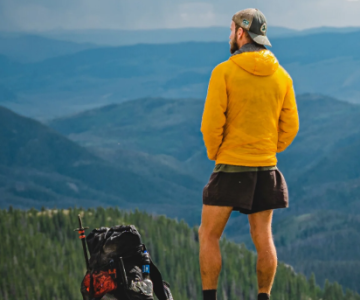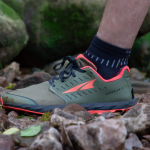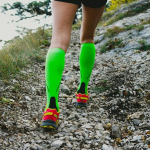Planning a hike and the forecast calls for rain? Don’t worry, a little rain doesn’t have to ruin your outdoor adventure. With the right gear and some thoughtful preparation, you can make the most of your trip, no matter how wet it gets. Here are 15 tips to help you stay dry, warm, and comfortable while hiking in rainy conditions.
1. Assess How Rain Affects the Trail
Before heading out, it’s crucial to consider how rain will impact your trail. Rain can lead to floods in rivers, make steep sections slippery, and turn trails into muddy slogs. If you’re unfamiliar with the area, get local advice to avoid unexpected hazards.
2. Choose Your Campsite Wisely
Choosing the right spot for your tent can make or break your trip. Avoid setting up camp in low-lying areas or flood zones. If strong winds or thunderstorms are possible, steer clear of exposed ridges. For more detailed tips on campsite selection, check out my article on choosing the best campsite.
3. Keep Wet Gear Outside the Tent
Bringing wet gear into your tent will create a damp environment, ruining your sleeping bag and other items. Store your wet boots, jackets, and packs under the vestibule. If space is tight, you can hang a light tarp outside to keep your gear dry and give your clothes a chance to air out.
4. Pack Hand Warmers
Waterproof gloves are limited in their effectiveness, so bring chemical hand warmers instead. These portable warmth sources are easy to activate and can keep your hands warm for hours. Hand warmers are also great for drying out wet shoes and clothes. Just slip them inside your boots overnight to help them dry out.
5. Waterproof Your Backpack
Most backpacks aren’t designed to be fully waterproof, so it’s important to protect your gear. Either cover your pack with a rain cover or store your belongings in waterproof bags. For better protection, you can use a dry bag or even vacuum seal your clothes to save space while keeping them dry.
6. Protect Your Map and Valuables
Even though some maps are waterproof, it’s still a good idea to store any paper maps or sensitive items like your phone, wallet, and car keys in a ziplock bag. You never know when an unexpected downpour might occur, and keeping these items safe will save you from problems later.
7. Make Your Rain Gear Accessible
When the rain starts pouring, you’ll want quick access to your rain jacket and other wet-weather gear. Store your rain gear in an easily accessible pocket of your backpack, so you don’t have to dig around when you need it most. Be sure to dry out wet clothes as soon as you can to prevent mold.
8. Reapply DWR to Your Waterproof Gear
Over time, the waterproof coating on jackets and pants can lose effectiveness. To restore your gear’s ability to repel water, consider reapplying a Durable Water Repellent (DWR) treatment. Washing your jacket properly can help maintain its waterproofing by removing debris that can degrade the coating.
9. Choose Jackets and Pants with Vents
When hiking in constant rain, your waterproof outer layer might lose some breathability. To prevent overheating, look for jackets and pants with vents. This will help you regulate body temperature and avoid sweating too much while still staying dry.
10. Avoid Cotton
Cotton absorbs water and doesn’t dry easily, which makes it a poor choice for hiking in the rain. Opt for moisture-wicking synthetic fabrics like polyester or nylon, or choose wool, which retains warmth even when wet. And don’t forget about your underwear—cotton briefs can contribute to hypothermia risks in wet conditions.
11. Stick to Synthetic or Wool Insulating Layers
When temperatures drop, it’s essential to layer with materials that retain warmth even when damp. Synthetic midlayers, like fleece, work well in wet conditions. Avoid down, as it loses its insulating properties when wet. If you have a down jacket, keep it dry so you have something warm to wear at camp.
12. Set Aside a Dry Outfit for Camp
After a long day in the rain, nothing feels better than changing into dry clothes. Keep a dry set of clothes in your pack for when you reach camp. This is especially important as your body starts cooling down in the evening—staying warm and dry can prevent hypothermia.
13. Prevent Blisters
Wet feet can lead to blisters, so it’s important to take precautions. Treat any hot spots right away with blister pads or Moleskin. If your blisters get worse, use Molefoam to prevent further friction. Consider waterproof gaiters to keep your feet dry if that’s a priority for you.
14. Reconsider Your Footwear Choice
Hiking boots and shoes each have their pros and cons in wet conditions. While boots provide extra waterproofing and warmth, they take longer to dry out if they get soaked. Trail shoes may get wet faster, but they dry quicker and are lighter overall. If conditions allow, trail shoes are often a better option for rainy weather, except in very cold or snowy conditions.
15. Use Gaiters to Keep Water Out
Gaiters are helpful for protecting your legs from water, mud, and vegetation when hiking off-trail, but they also serve a vital role in keeping your boots dry during wet hikes. If you’re not wearing waterproof pants, gaiters can prevent water from soaking your clothes as you wade through wet brush.
Embrace the Challenge
The best way to improve your rainy weather hiking skills is to get out there and practice. Only real experience in the elements will help you refine your gear and techniques. If you’re looking for more hiking tips, check out my articles on essential backpacking skills and what to pack for an overnight adventure.





